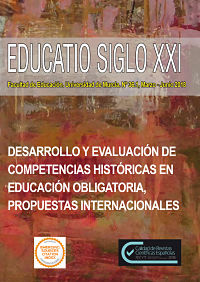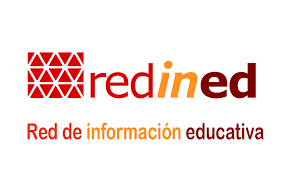The development of narrative competence in native Spanish students. Analysis and interpretation of a research with filmic and literary referents
Abstract
This paper was written as it was felt therewas a need to create a simple but exhaus-
tive system of assessment to evaluate the
narrative skills of students doing Spanish
as a foreign language and those studying it
as their mother tongue.
The main aim of this paper is to create and
appraise a model capable of producing
and evaluating written and oral skills of
Italian B2 level students learning Spanish
as a foreign language and Spanish stu-
dents studying Spanish as part of their B2
level curriculum.
What distinguishes this paper is its inno-
vative semiotic approach which cross-
fertilizes the relationships between cine-
ma and literature. Although two different
narrative techniques are employed, these two elements develop the same semantic
reference. Another original feature is that
this study is not based on a simple com-
parison between the two genres but rather
on the correlation between them. To this
extend, a model called C.O.E.N was crea-
ted. This didactic model concentrates on
oral and written competency in Hispanic
texts which can be evaluated once stu-
dents learning Spanish as a second lan-
guage have reached a B2 level, but also
on mother tongue Spanish students who
have reached the same level. This method
links production and evaluation of oral
and written competency in narrative texts.
Due to length restrictions, this paper pre-
sents only the results of the analysis of
Spanish learners’ written productions.
Downloads
-
Abstract434
-
PDF (Español (España))981
Original work publishes in this journal is subject to the following terms:
1. Murcia University Press (the publishing house) holds the copyright of the publishes work, and favours and allows their reutilization under the use license stated in point 2.
© Servicio de Publicaciones, Universidad de Murcia, 2015
2. Work is published in the electronic edition under a license (Creative Commons Reconocimiento-NoComercial-SinObraDerivada 4.0 España (legal text). They can be copied, used, disseminated, transmitted and publicly presented, as long as: i) authorship and original publication source is acknowledged (journal, publishing house and URL of the work); ii) are not used for commercial purposes; iii) the existence and specifications of this use license is stated.
3. Conditions for self-archive. Authors are allowed and encouraged to disseminate electronically the pre-pint (before review) and/or post-print (accepted for publication) versions of their work before their publication since that favours earlier circulation and dissemination resulting in an increased chance for the authors to be cited and for the work to reach a bigger share of the academic community. Colour: RoMEO: green.







